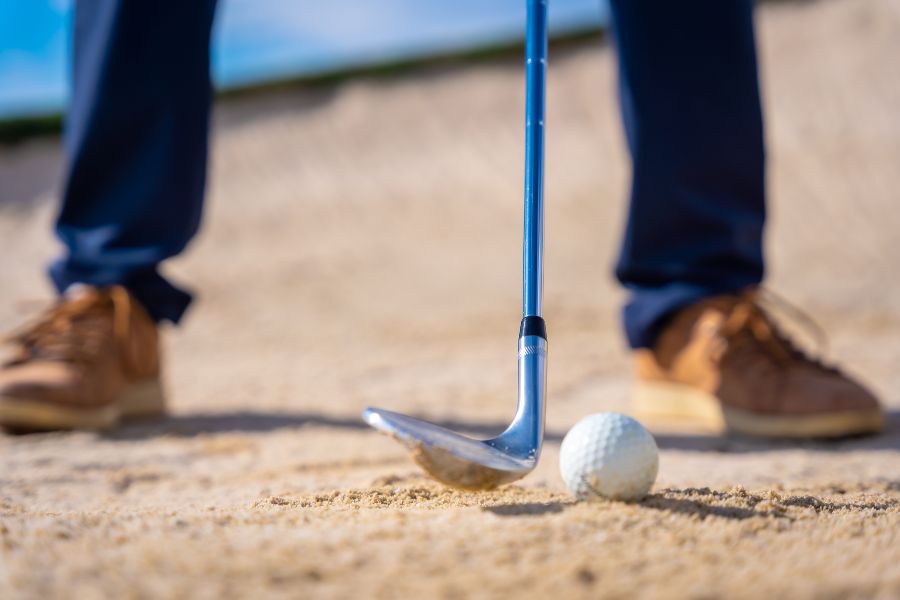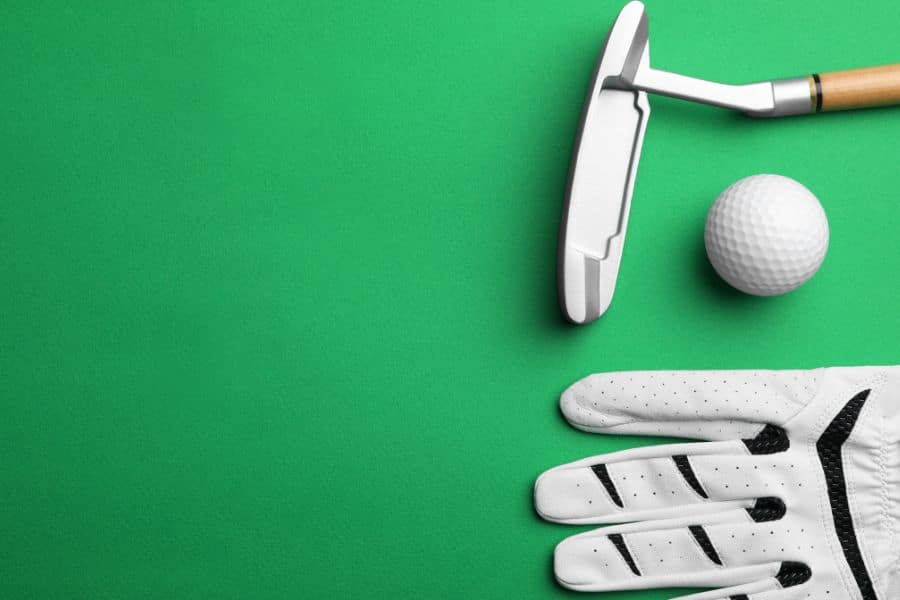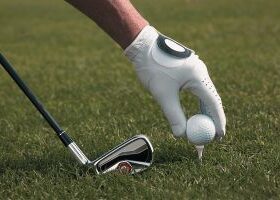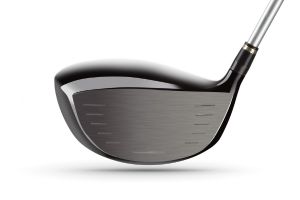Golf club technology has experienced considerable breakthroughs and adjustments in recent years. Manufacturers are continuously working to fulfill the demands of today’s golfers, which results in numerous club adjustments.
While many components of golf clubs have changed throughout time, one feature that has stayed constant is wedge technology.


The pitching wedge is unique among wedges, functioning as a regular club in most iron sets.
Understanding the loft of your pitching wedge is critical for hitting efficient shots and approaching the green, whether you’re a novice or an experienced golfer.
What Is Loft and Why Is It Important in Golf?
The loft is the angle between the clubface and the vertical plane in golf. It is an important component that considerably influences the trajectory and distance of the golf ball when struck.
Loft determines how high the ball will launch into the air and how long it will go before landing.
How many degrees of loft is a pitching wedge?
Because the official loft range is 41 to 46 degrees, the most frequent loft configuration for pitching wedges is 43 to 44 degrees.
Many golf club makers create pitching wedges with these lofts to combine distance and control.
However, the actual loft might vary depending on the brand and type of golf club. There is no uniform standard for pitching wedge loft.
Thus, different brands may provide somewhat varied loft angles. It’s usually a good idea to read the specs of a pitching wedge to get its exact loft measurement.
Pitching wedges are key clubs. Learn about their degree and how they fit into club lofts.
Understanding the Range: From 41 to 46 Degrees:


Standard Loft Range:
- The usual loft range for a pitching wedge begins at about 41 degrees and rises to around 46 degrees.
- This range gives players a flexible club that can handle a variety of shots around the green.
Common Loft Configuration:
- The conventional loft range is 41 to 46 degrees, but the most frequent loft configuration for pitching wedges is 43 to 44 degrees.
- Many golf club makers create pitching wedges with these lofts to combine distance and control.
Individual Manufacturer Variances:
- Remember that there is no industry standard for pitching wedge loft.
- Pitching wedges from different manufacturers may have somewhat varied loft measures. Therefore, it’s critical to examine the characteristics of a certain club before purchasing.
Impact on Shot Trajectory and Distance:
- A pitching wedge’s loft considerably influences shot trajectory and distance. Higher lofted pitching wedges, closer to 46 degrees, produce a higher ball flight and a steeper fall angle.
- It can be useful for shots that need a quick stop on the green, especially on softer surfaces.
Lower lofted pitching wedges, closer to the 41-degree range, on the other hand, provide a flatter trajectory with less spin.
These shots are better suited for scenarios when distance and roll-out are sought on hard or fast greens. Create a header for this material that begins with what or anything else.
How Loft Affects Ball Trajectory and Distance:
The loft of a golf club, notably the pitching wedge, affects ball trajectory and distance significantly. Here’s how loft affects these variables:
Ball Trajectory:
The loft of a pitching wedge influences the ball’s initial launch angle. Higher lofted pitching wedges generate a higher ball flight with a steeper fall angle.
This trajectory is advantageous for shots that must halt fast on the green, particularly on softer surfaces.
The greater the loft, the more softly the ball will fall, minimizing roll-out distance.
Distance Control:
Lower lofted pitching wedges, closer to the 41-degree range, produce a flatter trajectory with less spin.
A lower trajectory might be useful in certain instances, including while playing on firm or fast greens.
Because of the lower spin and flatter trajectory, the golfer has more control over the total distance the ball travels.
High Loft vs. Low Loft: Pros and Cons
High Loft (for example, 46 degrees):
Pros:
Increased stopping power on greens: The high Loft lets the ball land vertically, encouraging a swift stop upon contact.
Improved approach shot control: The steep drop slope allows golfers to manage the distance and accuracy of their strokes around the green.
Cons:
Reduced distance: Higher lofted throwing wedges have shorter distances than lower lofted clubs.
Limited use in certain situations: Very high-lofted pitching wedges may not be suitable for shots that need extensive roll-out or when faced with severe headwinds.
Low Loft (for example, 41 degrees):
Pros:
Potential for greater distance: Lower lofted pitching wedges can produce extra space because of the flatter trajectory and less spin.
Versatility in various shooting scenarios: The lower Loft opens up more shooting alternatives, such as bump-and-run shots and ones that need more roll-out.
Cons:
Challenging to stop on softer greens: The flatter trajectory and lower spin may limit stopping power on softer greens.
Potential difficulty in controlling height: Low-lofted pitching wedge shots may have a lower peak height, making it more difficult to clear obstructions or hazards.
How do I choose a loft?


Choosing the proper loft for your wedges is critical for improving your ball flight, distance control, and overall performance on the golf course.
Here are some essential elements to consider while selecting the ideal loft for your irons:
1) Know Your Loft Options:
- Irons normally come in various lofts, each with its loft angle. The loft angle rises as you progress from long irons (lower numbers) to short irons (higher numbers).
- A 3-iron, for example, has a lower loft (about 18-21 degrees) than a 9-iron (approximately 40-45 degrees).
- Understanding the loft possibilities for each iron in your set is critical.
2) Consider Your Swing Speed
Like with the driver, your swing speed is critical in determining the optimum fairway wood loft.
While a professional fitting is the best method to establish your specific requirements, you may approximate your swing speed if necessary.
Analyzing the distance, you hit a certain club might help establish your swing speed.
If you hit a 5-wood about 200 yards, your swing speed is between 85 and 95 mph. As a starting point, consider the following broad guidelines:
Swing Speed below 85 mph: Consider fairway woods with lofts ranging from 21 to 25 degrees if your swing speed is less than 85 mph.
The swing speed of 85-95 mph: Look for fairway woods with 18-20 degrees lofts.
Swing Speed above 95 mph: Choose fairway woods with lofts ranging from 14 to 17 degrees.
3) Assess Your Skill Level:
- When selecting the loft for your irons, keep your skill level and ball-striking consistency in mind.
- Higher lofted irons (8-iron through pitching wedge) are often simpler to hit and have greater forgiveness, making them ideal for novices or players who struggle with consistent ball striking.
- Lower lofted irons (3-iron through 7-iron) need more skill and precision but can give skilled players more distance and shot-shaping control.
4) Consider Your Distance Gaps:
- Examine your club’s distance gaps to guarantee equal spacing and coverage throughout your iron set.
- It would help if you had constant intervals between your irons, allowing consistent yardage increments for each club.
- Changing the loft of your irons will help you achieve greater distance spacing and guarantee you have the correct club for any occasion on the course.
4) Consider Your Ball Flight:
- When choosing the loft for your irons, consider your desired ball flight.
- Greater lofted irons have a greater trajectory, which might help you stop the ball faster on the greens but may cost you some yardage.
- Lower lofted irons, on the other hand, provide a lower ball flight with a greater roll-out, which is useful in windy situations or when seeking more distance.
5) Get Custom Fitting:
- Consider having a personalized club fitting from a professional club fitter or a reputable golf retailer.
- A club fitting session will evaluate your swing characteristics, launch angles, spin rates, and ball speed to find the best loft configuration for your irons.
- This personalized technique guarantees the ideal loft for your swing characteristics, maximizing your course performance.
Test various irons with differing loft settings on a practice range or during a fitting session whenever feasible.
Hit strokes with various lofted irons to assess ball flight, distance, and overall feel.
This hands-on experience will allow you to assess each loft’s performance and make an educated selection based on your tastes and intended outcomes.
When To Use a Pitching Wedge?


The pitching wedge is a key club in a golfer’s bag, often used for approach shots when the distance to the green is less than 100 yards.
It has a higher loft than other clubs, which allows the ball to soar higher and settle gently around the pin with less roll.
This lofted club is also effective for chip shots and bump-and-runs around the green, giving players, especially those with higher handicaps, forgiveness and simplicity of usage.
Furthermore, while the pitching wedge may be utilized for bunker shots, a specialized sand wedge with a greater loft may be advantageous for increased performance in sandy circumstances.
The pitching wedge provides variety and control, making it a must-have golf equipment. Explore how pitching wedge degree can influence your choice of golf balls.
How To Hit a Pitching Wedge
There are a few crucial points to remember while hitting a pitching wedge:
Control your power:
- Like other irons, full swings with a pitching wedge are often discouraged.
- Keep your power at roughly 75% of your maximal swing speed to retain control and accuracy.
Concentrate on ball-turf interaction:
- Strike the ball first, then take a shallow divot while brushing the turf with your club.
- You should ideally leave a little scuff mark the size of a dollar note after the ball to indicate a well-executed swing.
Practice in various scenarios:
- To learn how your pitching wedge reacts in different situations, like varied lies or course conditions, and spend time hitting shots during practice rounds or at the driving range.
- This hands-on experience will assist you in developing a feel for the club and improving your course performance.
How far should a man hit a 52-degree wedge?
A gap wedge is a flexible club that covers the distance difference between the pitching wedge and the sand wedge. It normally has a loft of roughly 52 degrees.
It enables golfers to perform full swings at distances too close for a pitching wedge but too far for a sand wedge.
A gap wedge in your bag gives you additional alternatives for approach shots and can help you score better by giving you greater control and precision in those in-between yardages.
What are the Other Wedge Options?
In addition to the pitching wedge, golfers should consider adding other wedge alternatives to their bags to improve their game. One of these possibilities is the gap wedge, which bridges the space between the pitching wedge and the sand wedge.
It adds variety to approach shots that are too short for a pitching wedge but too lengthy for a sand wedge. The sand wedge is developed primarily for heavier rough and bunker play shots.
It boasts a higher loft and a specialized sole specialized design to assist golfers in getting out of tricky lies and onto the green. Finally, the lob wedge is the club with the most loft in most players’ bags.
It’s mostly utilized for shots that need a high trajectory and a gentle landing, including hitting over obstacles or playing delicate strokes around the green. In these scenarios, the lob wedge provides precise control and elegance.
Adding these extra wedges to your bag can give you more shot alternatives and help you deal with different scenarios on the course more efficiently.
Conclusion
The loft of a pitching wedge influences the shot’s direction, distance, and control.
It is critical in optimizing launch circumstances and maximizing distance dependent on the golfer’s swing speed and skill level.
It is critical to select the proper loft for your pitching wedge. Factors like swing speed and skill level influence the best loft selection.
Less experienced golfers favor higher lofted pitching wedges because they provide greater forgiveness and aid in distance and consistency.









Leave a Reply